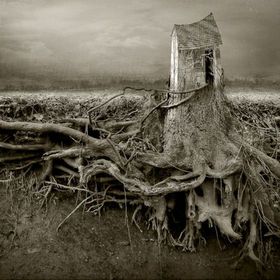Jerry Uelsmann
Jerry Uelsmann is traditional photographer from Detroit. In 1957 he earned his BFA from Rochester Institute of Technology. Three years later he earned his MS and MFA from Indiana University. The same year the photographer started teaching photography The University of Florida in Gainesville. This is where he currently resides with his artist wife, Maggie Taylor.
Uelsmann had his first solo show at Museum of Modern Art in 1967. Soon after he received the Receives Guggenheim Fellowship. Uelsmann created his composite images using multiple negatives in the darkroom. Some of his images are the total work of many years photographs. He is a champion of photomontages. Although Uelsmann is interested in the digital revolution in art, he does not use it himself. He feels he can accomplish what he needs to in the darkroom. His wife, however, is a photoshop montage artist.
All of Uelsmann’s images are in black and white. The images are surrealist landscapes. The landscapes look mystical. They have an other worldly appearance that make the viewer have an almost religious feeling. It hard to put into words how the images make you feel. I think each viewer needs to feel them for themselves.













